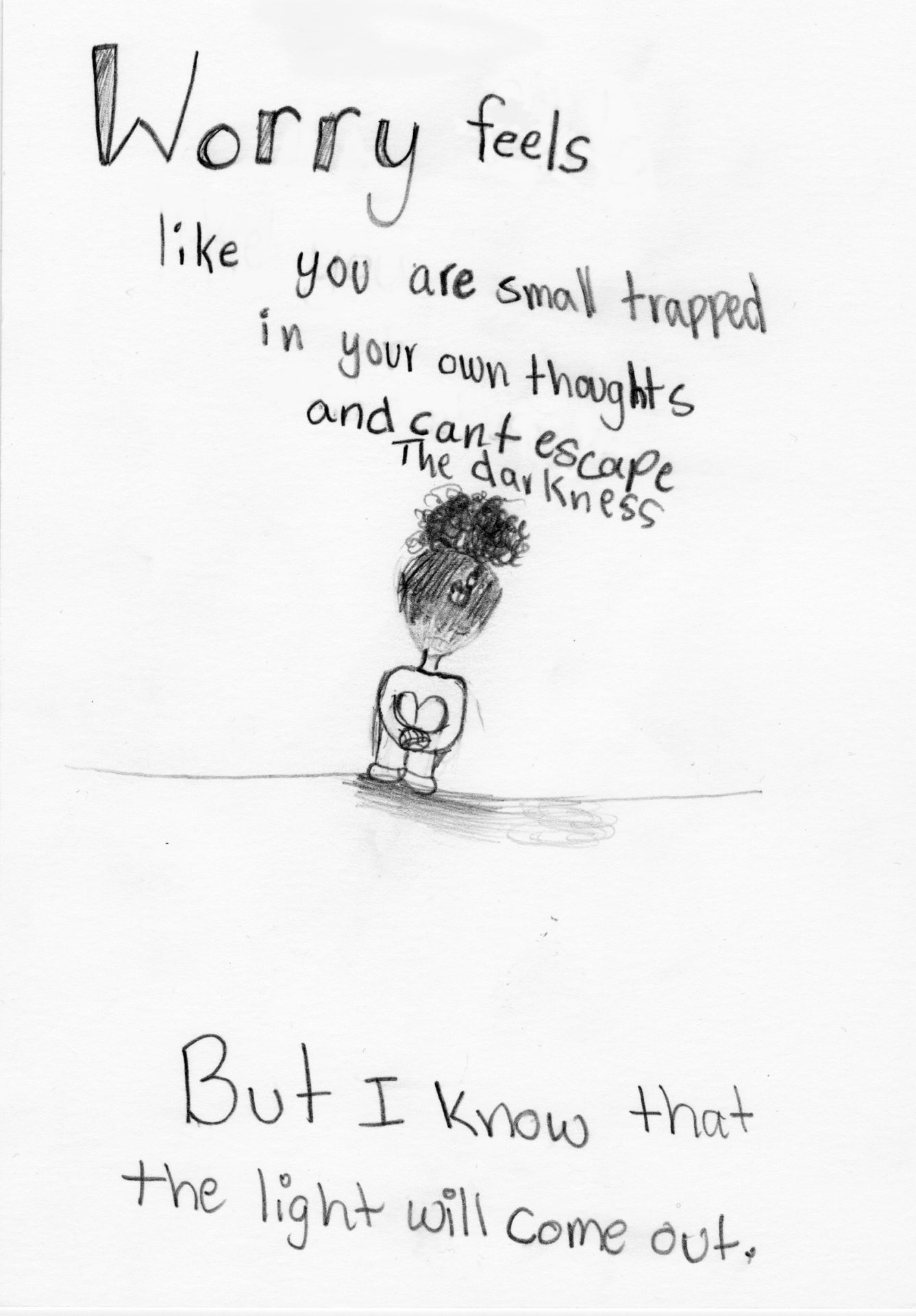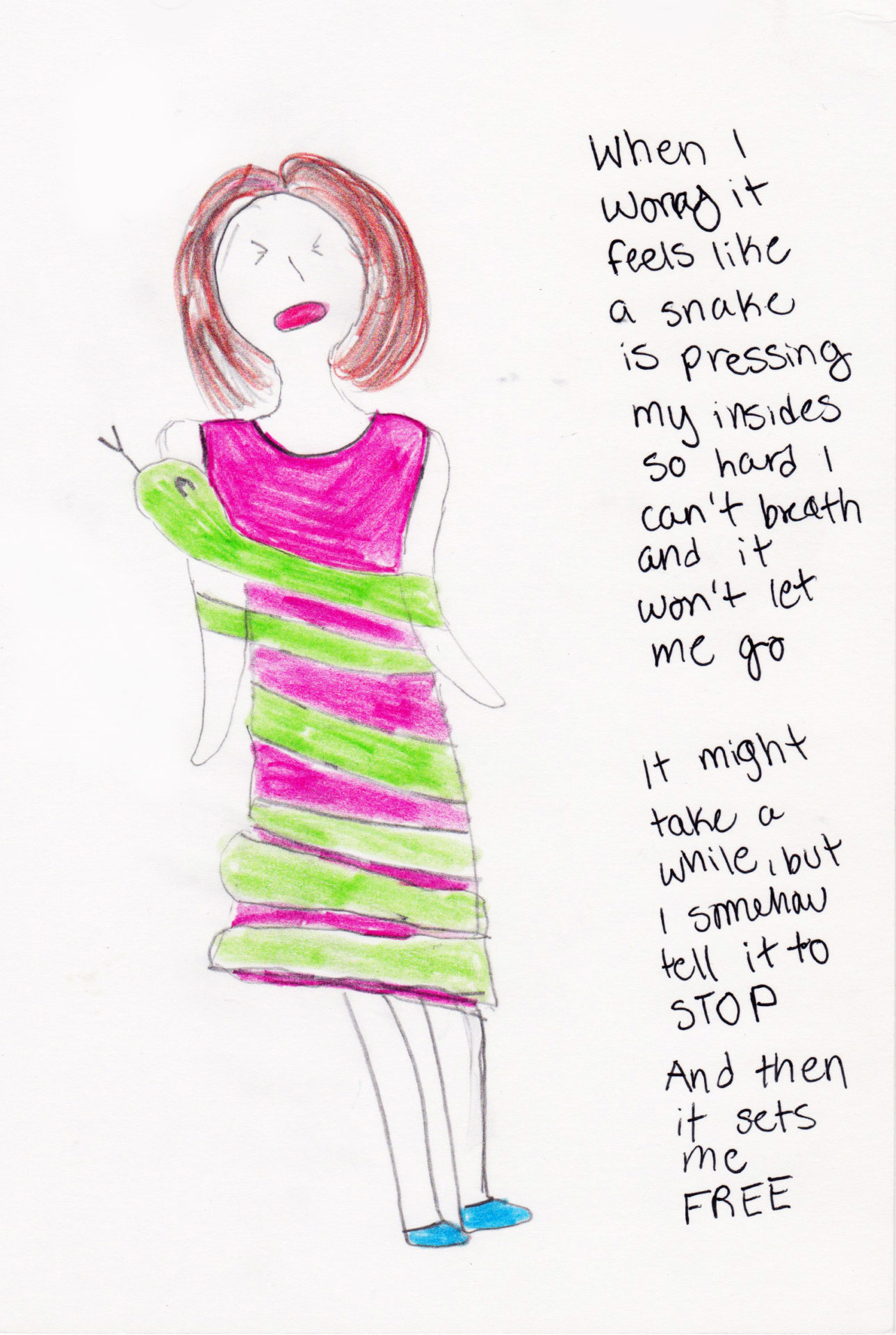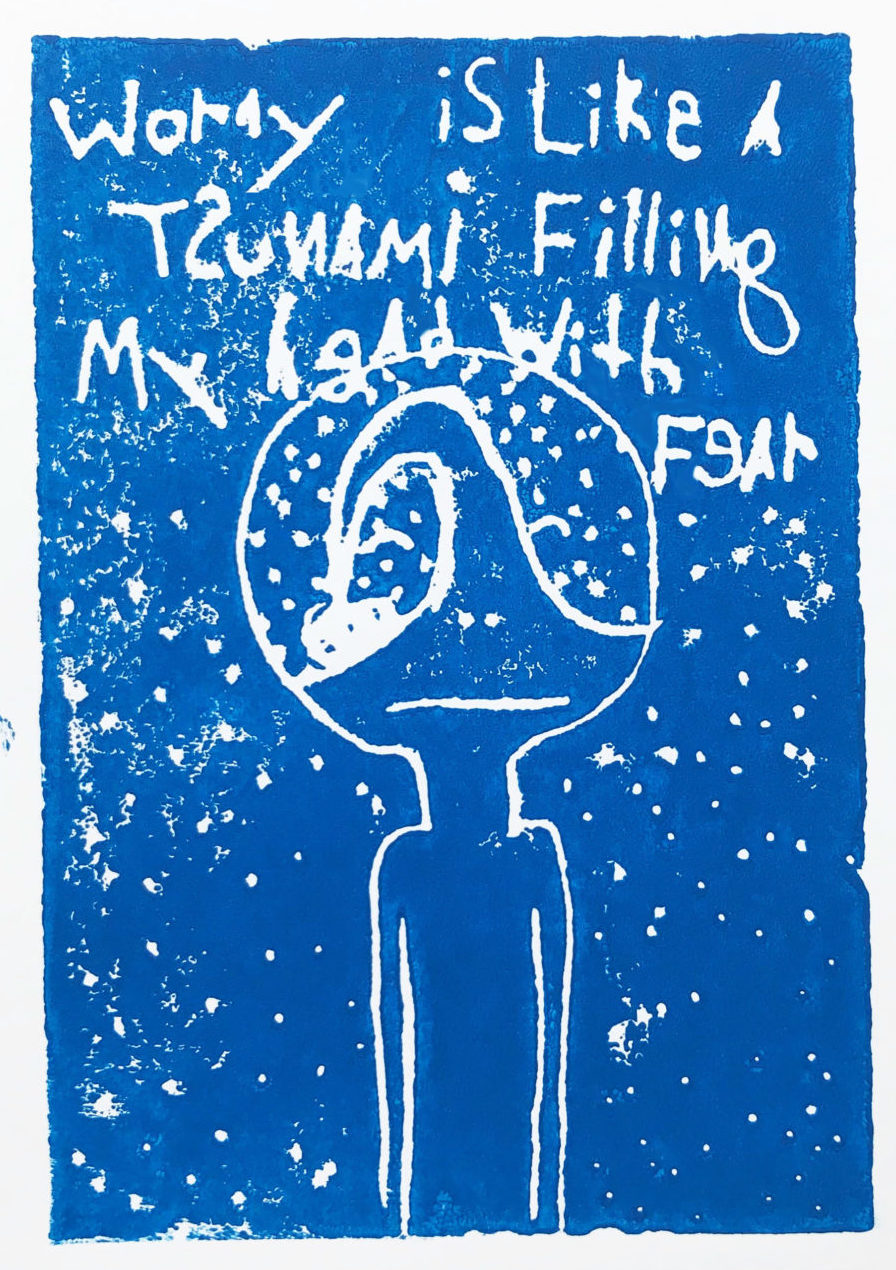Get yourself into a comfortable position, standing up or lying down, When you are comfortable, relax your body and close your eyes.
Imagine the feeling you just described in this project — the feeling you get when you are worried, sad, or stressed. Imagine you are holding that feeling inside your stomach.
Now, with all your might, squeeze your entire body around the feeling — squeeze your stomach, your arms, your legs, your chest and neck, your face, every muscle you have. Keep squeezing… and squeezing…
Now let the feeling go — release all of your muscles until you are completely relaxed.
Breathe gently for five seconds and on the count of five squeeze all of your muscle again. 1, 2, 3, 4, and…
Squeeze. Keep squeezing for five seconds and on the count of five relax your muscles again. 1, 2, 3, 4, and…
Relax.
Repeat these instructions two more times and end with one minute of relaxed breathing.
























